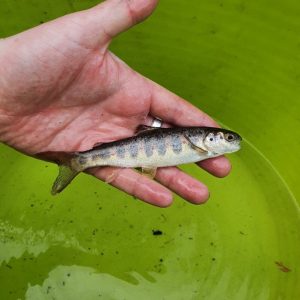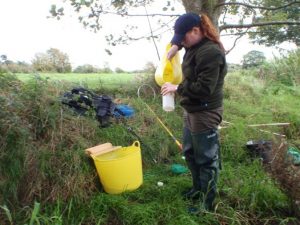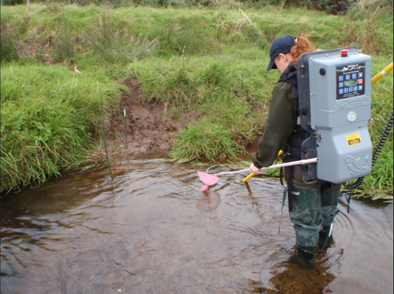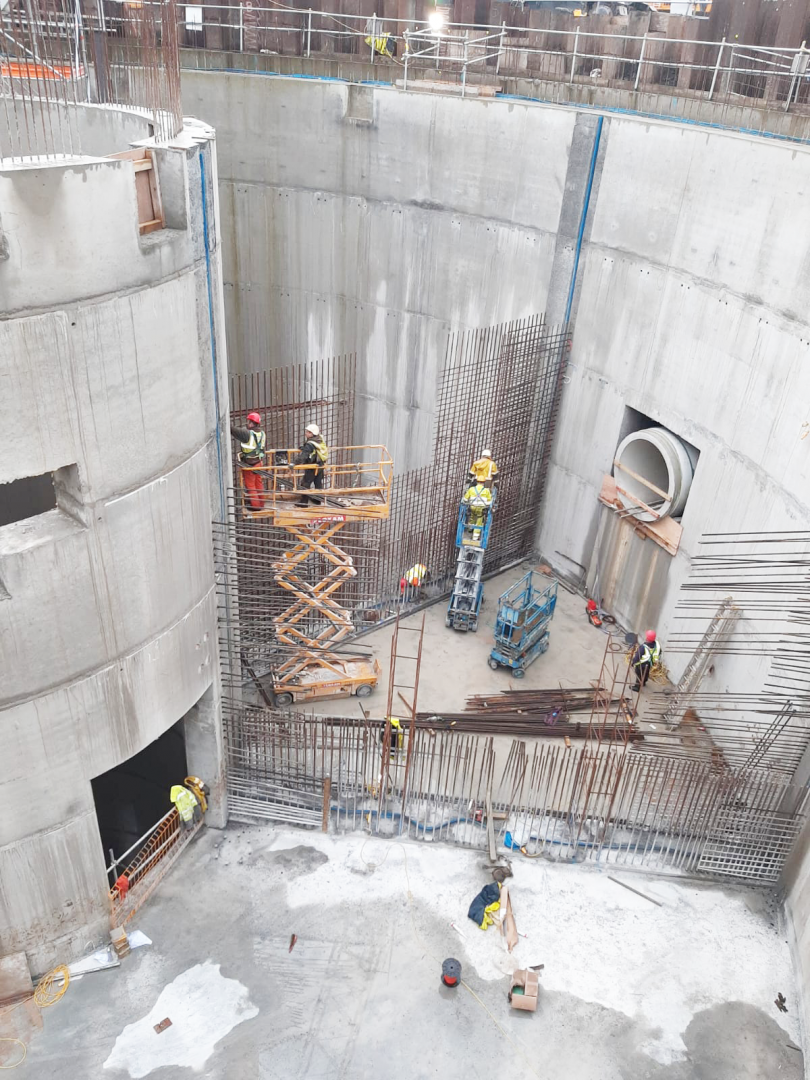TOBIN Consulting Engineers are now providing electrofishing services as part of their Aquatic Surveys.

What is electrofishing?
Electrofishing is a method used to catch fish in a quick and efficient manner while surveying rivers, canals and on occasion, the shallow margins of lakes.
Electrofishing uses the physiological effect of an electric field in water to stimulate a fish’s nervous system, causing it to swim towards the handheld net. In best practice, the fish is attracted to the net, rather than stunned, so as to prevent harm. The charge emitted into the water causes them to turn and swim towards the net, which enables their quick removal for storage until processing.
There are a number of different approaches to electrofishing:
- Targeted fishing: Specific areas are targeted to catch a certain species, i.e. river/brook lamprey in silt;
- Timed fishing: Electrofishing for a specific period of time, i.e. standard 10 fishing;
- Distance fishing: Electrofishing to cover a certain distance; and
- Pulsed fishing: Using high-voltage pulses by turning on and off the power intermittently. This is mostly to target lamprey in silt.
The Hazards
Electrofishing is a dangerous activity, as electricity and water are a very hazardous combination. Therefore, health and safety measures are very important for operators. It is crucial that the necessary health and safety equipment is worn, and that all equipment is in good working condition. Furthermore, TOBIN staff are trained so that they are aware of any possible risks. If done correctly, electrofishing should cause minimal harm to fish, making it a much it a much less destructive method of surveying fish.

Why is it used in surveys?
Electrofishing is the method of choice to obtain a representative sample of the fish assemblage for each survey site. This technique complies with European Committee for Standardisation (CEN) guidelines for fish stock assessment in wadeable rivers (CEN, 2003).
It will inform us of what species are present in a river, particularly conservation species such as salmon or lamprey. We will be able to gather species distribution, species richness and the age profile of fish in a river. If there is a particular fish species of interest, we can target certain areas when electrofishing. For example, if we need to catch lamprey, we might fish the muddy or silty shallows along the river margins where they may be burrowed. If we wish to find young salmon, we fish in the shallow riffles area along straight sections of the river, where the water is broken and appears to bubble or boil. If we want to find brown trout, they are most often in the deeper flowing sections called glides or in the pools. On most occasions, we simply want to learn about the whole fish population in a stretch of river, so we will time our fishing and are less target-specific in our approach. By covering a variety of habitats within the river, we should find a good mix of fish. Electrofishing is also used for the translocation of fish from one section of the river to another. This would be required if river diversions or trench works had been carried out. Fish would be moved downstream to a similar habitat from where they were removed.

When to carry out an electrofishing survey
The timing of sampling is linked to an understanding of the life history strategies of the target species. Sampling is typically carried out towards the end of the growing season when young fish are sufficiently large enough to be identified and strong enough to withstand the shock. Electrofishing surveys are usually carried out between the 1st of July and the 30th of September when stream and river flows are moderate to low, and less variable than during other seasons. They are carried out under a Section 14 state licence permitted by Inland Fisheries Ireland.
Where to fish
With the new LR-24 backpack, staff will be able to survey wadeable rivers when water levels are shallow. Usually, a team consists of one person fishing and another holding a bucket to collect the fish while fishing upstream. We can use additional teams in wider channels.
Each site ideally contains all habitat types, including riffle, glide and pool. A suite of physical and chemical parameters are also recorded. At each site, a ten-minute fishing is carried out using the backpack. Fish captured are then sorted and processed separately at each site.
Processing the fish
During processing, the species of each fish is identified, and the length is measured. For the purpose of species identification, juvenile river lamprey (Lampetra fluviatilis), brook lamprey (Lampetra planeri) and sea lamprey (Petromyzon marinus) are recorded as ‘Lamprey sp.’. Sea trout (salmo trutta trutta) and brown trout (salmo trutta) are listed separately. After processing, fish are held in large bins of oxygenated water until they are fully recovered, before returning them to the watercourse.



